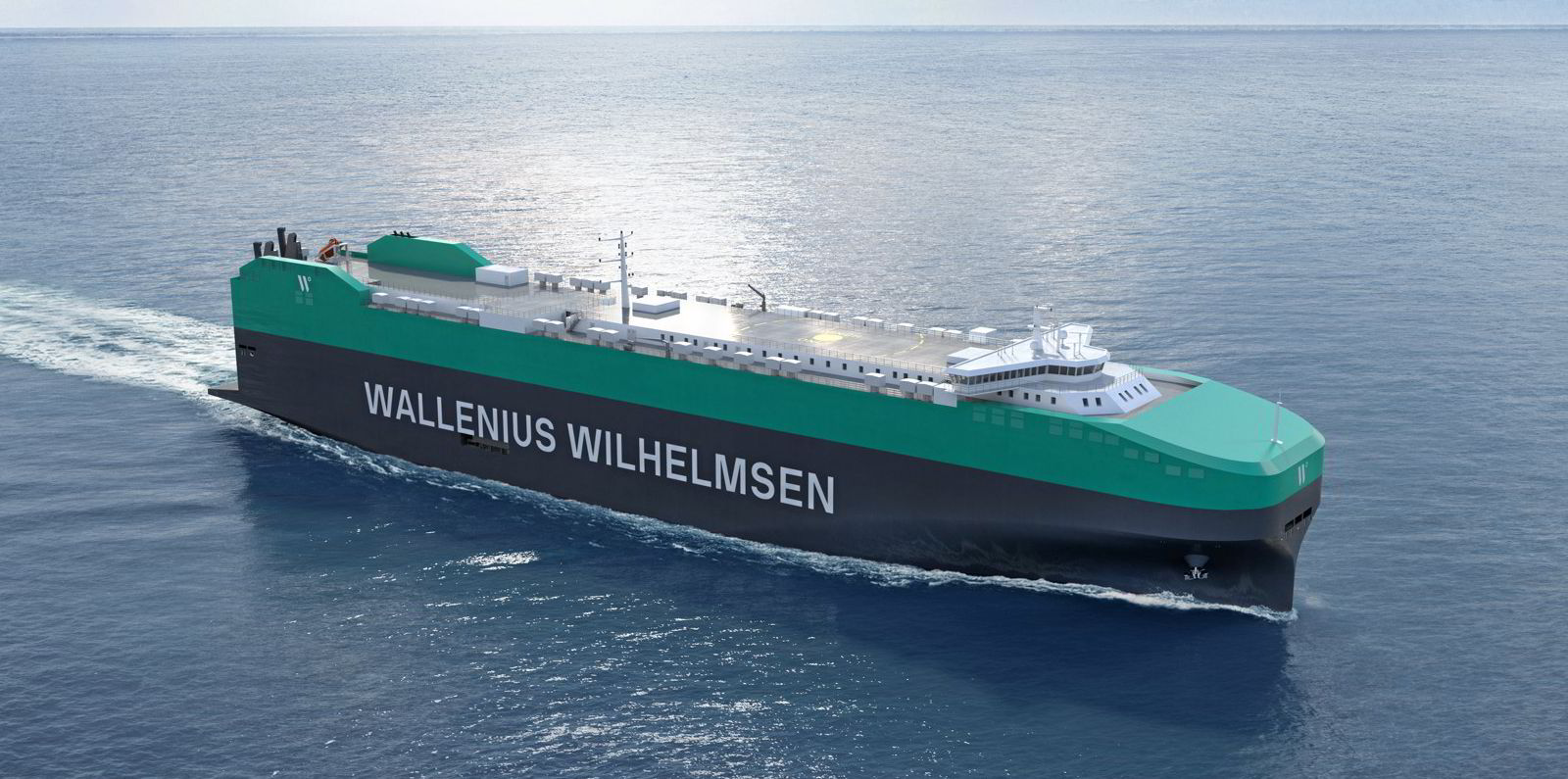Wallenius Wilhelmsen has signed a letter of intent for four methanol-capable and ammonia-ready car carriers as part of its aim to offer zero-emission voyages for customers by 2027.
The LOI is for four 9,350-ceu vessels, plus individual options for an additional eight ships, to be delivered from mid-2026 by Jinling Shipyard in Jiangsu, China.
The car carriers will be build to a Deltamarin design and it is hoped that the LOI will be converted to a contract by the end of this year.
Wallenius Wilhelmsen COO of shipping Xavier Leroi told TradeWinds the company wants the vessels to begin burning green methanol as soon as they leave the shipyard. This will, of course, require a lot of legwork to put fuel supply in place in just three years.
“We need to create an ecosystem enabling us to source and have a supply chain for green methanol to be available globally. Today, we believe that a lot of those efforts are taking place in Europe, but our vessels are just all around the world,” he said.
“It’s going to start with four and we have an individual option for eight additional vessels in total. We also need to see to it that we collectively can count on the scale of production of green methanol for our vessels, as well as for our competitors or other shipping lines or transportation modes that will also come to green methanol.”
The company believes methanol is the fastest way to net zero emissions but — to keep its options open — alternatively, the vessels may be converted to run on ammonia.
This energy transition will require some serious industry collaboration as well as support from fuel producers and sellers and national governments, Leroi said, adding that it will also require a shift in attitudes.
“So far, the whole industry has taken every bunker and energy source for granted — we’ve just been moaning and complaining about the prices,” he said.
“We are in front of a very, very different beast altogether [with zero-emission fuels].
“We cannot be focusing solely on our own procurement processes anymore. We should probably call for the industry to rally around a few energy sources — I don’t know if it’s a lobby or something else but one way or another, we just need to be sure that not only the majors, the energy companies but also the governments support the production of those biofuels, whether it’s bio-methanol, some others will come with bio-LNG, et cetera.”
Under group CEO Lasse Kristoffersen, who joined in June last year, Wallenius Wilhelmsen has made the decision to only invest in technologies that will enable the company to reach net zero emissions.
This has been tricky so far because the group has found that more cross-industry support and collaboration is needed to get zero-emission technologies feasible in the long term, Leroi said.

Wallenius Wilhelmsen plans to name new vessels being built under the new LOI “The Shaper Class” to demonstrate its commitment to shaping a net zero future in shipping.
Meanwhile, the company wants to maintain a certain level of optionality in the solutions it chooses and “just have our eyes completely open on any new energy sources into the future”, he added.
The group has already begun working with bio-methanol producers to develop a supply for the future.
“We are not [entering] completely blind into this process. We’re just saying that we really need to get our acts together, not only as Wallenius Wilhelmsen, but as an industry,” Leroi said.
Already the world’s largest operator of ro-ro vessels, Wallenius Wilhelmsen’s strategy is to maintain a fleet of 125 to 135 vessels.
Older vessels will be upgraded or modified to reduce their fuel consumption and help them operate more efficiently. The group is also looking at wind-assisted propulsion for some of its vessels.
Wallenius Wilhelmsen is also using technology such as artificial intelligence for weather routing, which enables vessels to take the most fuel-efficient route to their next port.




